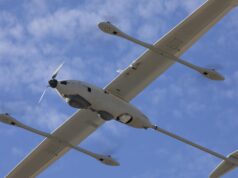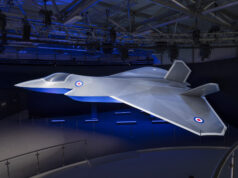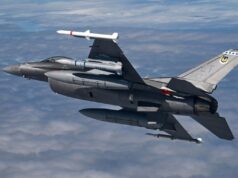The British Army has begun industry engagement for Project CORVUS, a major programme to replace its current Watchkeeper drone fleet with a new, cutting-edge Uncrewed Air System (UAS) capable of 24-hour persistent surveillance.
According to a Preliminary Market Engagement Notice published on 15 April 2025 by Defence Equipment and Support (DE&S), the project aims to deliver a Land Tactical Deep Find (LTDF) capability across divisional and corps-level operations.
The new system is intended to meet a key operational need identified by the Secretary of State for Defence in a statement to Parliament on 20 November 2024.
The CORVUS programme is valued at £130 million excluding VAT, with the potential to increase depending on options for additional surveillance task lines and extended support periods. DE&S is seeking input from industry to inform its acquisition strategy and has invited prospective suppliers to complete a questionnaire by 30 April 2025.
“The Army are seeking to procure a modern, deployable, easily supportable and cost-effective capability,” the notice states, adding that the replacement system should minimise changes to existing Army doctrine and structures. DE&S anticipates that the contract will be awarded to an Original Equipment Manufacturer or prime contractor capable of supporting both equipment and operational needs.
- Key requirements for the CORVUS system include:
- Real-time land and maritime intelligence, surveillance, target acquisition and reconnaissance (ISTAR),
- Low-latency data sharing across joint and coalition networks,
- The ability to operate in contested airspace and GNSS-denied environments,
- Technological agility to allow for spiral development,
- Integration with the Land Industrial Strategy and compliance with MOD regulations.
The Army initially requires two task lines, each providing 24-hour persistent surveillance, with the expectation of reaching Minimum Deployable Capability in 2025. The system must also be supportable by existing workforce levels within 47 Regiment Royal Artillery, which operates the current Watchkeeper system.
The notice also confirms that live demonstrations will be required for shortlisted bidders, with locations likely to include UK military sites or OEM facilities, subject to appropriate aviation clearances.
The procurement will be conducted under the Procurement Act 2023, and the estimated contract duration is from 31 December 2025 to 31 December 2030, with options to extend until 2035.














lets hope this goes well
Start now making every month extra $8000-$22000 or more by just doing an easy online work from home. Last month i have earned and received $19650 from this work by giving this only 3 hrs a a day.Every person can now get this work and start earning online by.
For details check ——-⫸ Www.WorksProfit7.Com
That has a spicy timeline….Minimum deployable capability in under 9 months. Basically needs to arrive next week.
A lot of these timelines seem to be getting tighter and tighter… it seems Government is driving a change in pace.
JOIN US Everybody can earn 250/h Dollar + daily 1K… You can earn from 6000-12000 Dollar a month or even more if you work as a part time job…It’s easy, just follow instructions on this page, read it carefully from start to finish… It’s a flexible job but a good eaning opportunity.tab for more detail thank you……..
check ——-⫸ Www.EarnApp1.Com
Let’s hope they learn from the Ukraine war, so many lessons in UCAV’s in that conflict.
The UK MoD has a bad track record with procurement and (the Armed Forces) by changing specification.
Had the Army taken the original Elbit UAV or EADS / IAI Eagle (Heron) on offer at the time, it would have been a success and gained them flying experience.
They could then have considered upgrades but they wanted a gold plated Watchkeeper solution that has never performed as expected.
They should take the new system as it is specified and make no changes to it – then it might work as they hope.
You mean like Ajax?
Unlike AJAX which was bespoked to death.
Let’s sit back and watch the army stuff this one up.
“ adding that the replacement system should minimise changes to existing Army doctrine and structures”
And there is the massive problem…..
The system has to fit in with ‘the way army does things’ rather than simply be the best system…
Watchkeeper needed a solid runway, for a tactical UAV, now they want 24hrs, which puts it into Reaper grounds, but deployable, seriously interested how this requirement is solved.
Surely Army should be looking for tactical UAV’s that can be launched without infrastructure, leave the strategic UAV’s to things like Global Hawk and Protector, I am confused what the army actually wants/needs? bearing in mind what’s happened in Ukraine
This feels really cheap, because I’ve already had a long conversation about Airlander today, but could a small airship provide the performance the Army need?
Only needs to be big enough to carry the underslung loads (1 long range camera, 1 radar) from Watchkeeper and have a large enough engine to maintain station in the 90th percentile of wind speeds.
Given that there are almost no performance requirements for Corvus, a nice slow airship makes a lot of sense.
Airships get better as they get bigger and small airships are a waste of time. For really small you do well with quadcopters. Medium (and this feels like medium), you want fixed wing or hybrid.
Yes, because otherwise the tail wags the dog. Genuinely I think that might be the most ill informed comment I’ve ever read on here.
The best equipment is the equipment that allows us to do our job and our part of the fight. Not, what has the best paper capability in some imagined league table.
I think the Army has always fitted their doctrine to their kit or they wouldn’t have specified an armoured formation that relied on wheel and track turning up at the same place at the same time.
Yet another instance of the UK axing an important capability before even starting the procurement of a replacement. Okay Watchkeeper wasn’t a huge success and would be a sitting duck in Ukraine, but the force was still doing useful duties in both Army exercises and operations such as patrolling the English Channel for small boats and illegal fishing. Even with an expedited tender process, it will surely be a couple of years before the new system reaches an IOC.
Coast guard would make good use of this, as well as border control
WK will continue to provide the capability until a suitable replacement has been successfully fielded. The ‘deep find’ capability remains a critical gap and still requires development. Whatever system replaces WK must be rapidly upgradeable to meet evolving threats and adapt to changing operational environments, this will require a modular design and open systems architecture.There are several capable COTS systems currently available.
While 24-hour persistent coverage typically requires rotating multiple assets, it does not necessarily depend on a single platform. That said, there are systems capable of providing this level of endurance without the need for fixed runways.
Let’s just hope those making the decision truly understands the requirement and UAS capability.
Exactly my thought.
At least the gap looks like it could be just a year, rather than with HMS Albion and Bulwark where it will be at least a decade.
For the love of everything that’s holy, learn the lesson of watchkeeper, don’t take something that already works perfectly bloody well and reinvent the wheel at huge unnecessary expense!!
An off the shelf solution, bought yesterday please!
Here we go again mate.
Another Project for the Royal Artillery, where they will again have a £1 budget, but expect a gold plated solution, capable of working 24 hrs a day, 7 days a week and be capable of being operated by someone who two weeks before was humping 155mm shells around the gun park.
Wouldn’t a ‘bespoke’ satellite be cheaper at every level?
hello.
I would like see orbiter 4 VTOL replacement watchkeeper
https://aeronautics-sys.com/systems/orbiter-4/